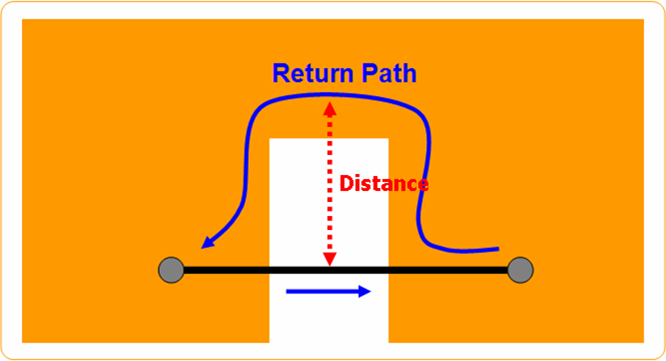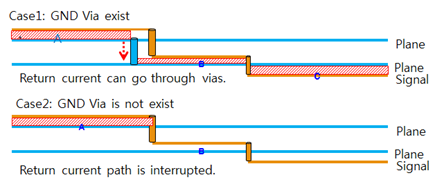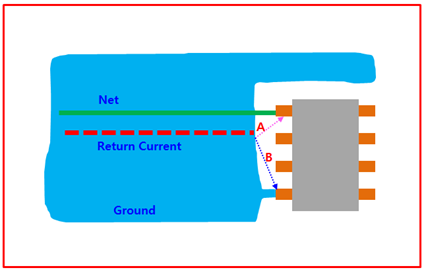Return Path
- Item: Input item name.
- Net: Select a target Net from the Net Class list.
- Reference: Select a Ground Net from the Net Class list to search for the Return Path.
- Pass/Fail Criteria: Define the value (Ratio or Distance) to detect the fail of Return Path and Signal.
- Check ratio: Check ratio between net length and return current path.
- Check distance: Check maximum allowable detour distance of return
path.

Figure 1.
- Check distance: Check maximum allowable detour distance of return
path.
- Consideration: Addition factors for Return Path search.
- Select Start Component in case of Branch net: When searching Return Path of multiple pin (more than 2 pins) net, a start component must be defined. Return paths are searched from the start component to all other components or pins.
- Except Component Group: Certain types of components or pins can be excluded from searching return path. (For example, Test Points)
- Flow current along via location: To search for the shortest return path one
multiple ground layers connected by via. When it is not checked, return path
is searched on a superimposed ground layer.
- Not checked: The return current always goes through capacitance
between two planes regardless of via existence.

Figure 2. - Check: The return current can go through only if there is stitching
via.

Figure 3.
- Not checked: The return current always goes through capacitance
between two planes regardless of via existence.
- Ignore return path for near area to pin: Complete the return path search to
the ground plane edge.
- Will not check pin area: Enter a radius of circular region around pins to be excluded for the rule check.
- Return path to pin: Select the way to complete the return path search.
- Consider Return Path from GND Pin to GND Pin: Complete the return path search to the ground pins that are closest to the signal pins. (Fig. below, path ‘B’)
- Force make return path to pin: Force return path to connect to
directly to GND pins as shown in Fig. below. (Fig. below, path
‘A’)

Figure 4. Return path connection compensation

Figure 5.
The electrical field strength is proportional to loop size, so it is very important to reduce loop size of circuit in order to reduce EMI noise.